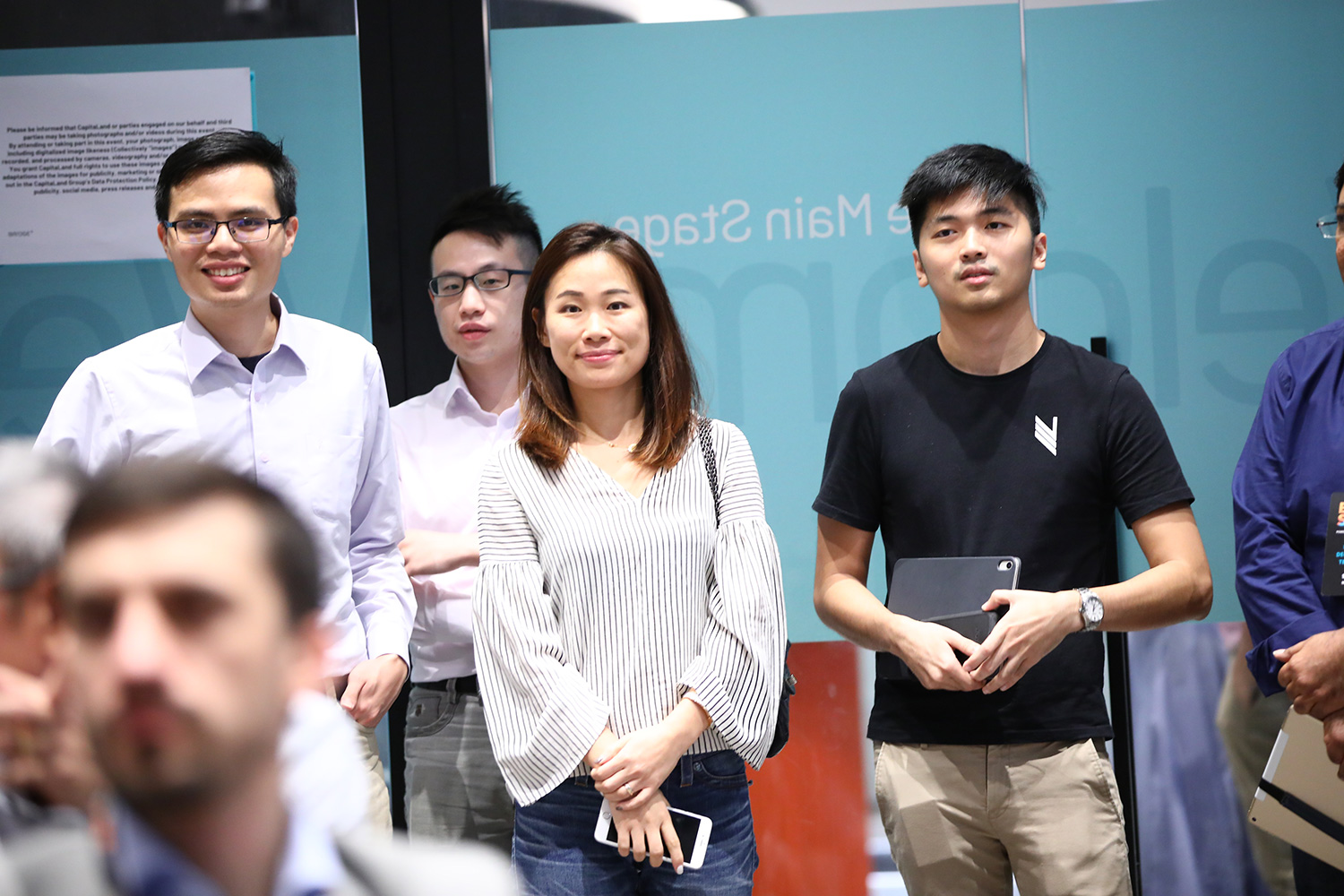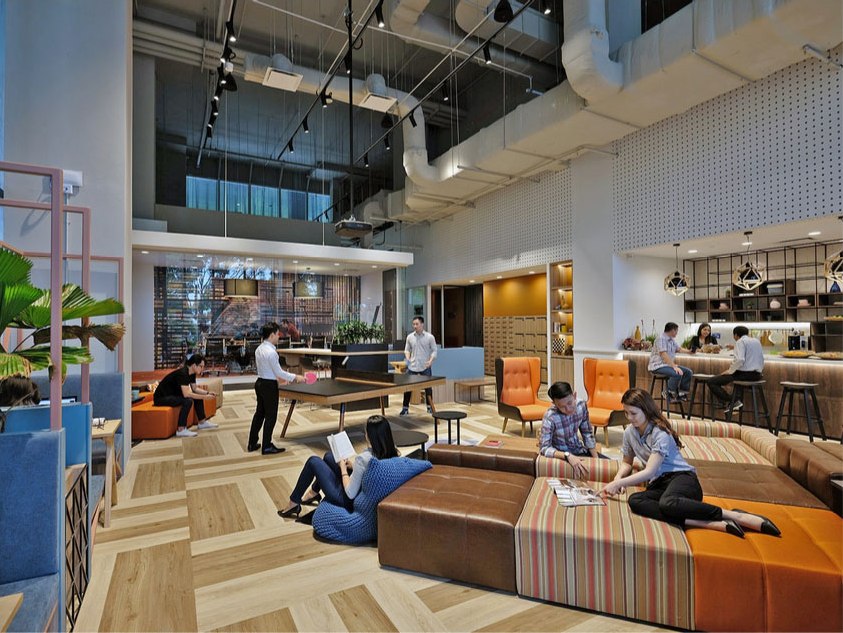
 26 FEB 21
26 FEB 21
All you need to know about transitioning to a coworking space
The workplace as we know it is changing. As the Covid-19 pandemic continues to disrupt lives and businesses around the world, enterprises are facing a logistical challenge: where can our staff work?
Office spaces are no longer feasible due to social distancing measures—not many workers feel safe enough to travel to the workplace and spend an eight-hour day alongside hundreds of other employees.
When Singapore eased its circuit breaker measures in June 2020, 27% of employees said they still didn’t feel safe returning to the office. In fact, National Development Minister Lawrence Wong said telecommuting or working from home should continue to be the “default setting.”
For enterprises that want to get small teams together or give employees a professional working environment with few distractions, coworking spaces have become the answer. With their multiple locations, customisable spaces, and adaptable rental terms, they offer enterprises a flexible workspace solution to keep businesses running smoothly in the New Normal.
But for a big business used to having pants in seats, the shift to a distributed workforce and a shared space can induce a culture shock. That’s why we’ve prepared this guide for enterprises on transitioning to a coworking space.
The benefits of coworking for enterprises
Moving to a coworking space offers enterprises the flexibility they need to thrive in the New Normal of work, where remote working, agility, and collaboration are the norm.
Opportunities for collaborating and networking
For Yugine Yap, a community manager at Bridge+ Ascent, the network is the top benefit enterprises get when using a coworking space.
She says that many enterprises like to position their innovation teams within coworking spaces to learn perspectives from different companies and industries. It allows them to meet startups and SMEs that they normally don’t encounter, as well as bounce ideas off of other industry players and find potential collaborators.
Flexible rental terms
In unpredictable times like these, flexibility is crucial for office managers looking for workspace solutions.
Many enterprises that have come knocking on Bridge+ Ascent’s doors during the pandemic are looking for flexible solutions that traditional leases cannot. For example, some companies might require short-term agreements with options for extensions, as it helps them weather the uncertainty of the current situation.
And even after the COVID pandemic blows over, employees’ preferences may have changed in favor of remote and flexible workspaces. Employers might find that the use of a flexible workspace improves productivity, innovation, and savings.
In fact, many organisations and think tanks believe that telecommuting—working somewhere that isn’t the office—is here to stay. A survey by Gartner revealed that 74% of companies planned to allow staff to continue working remotely at least part-time once the pandemic passes.
Flexible rental terms also allow enterprises to test the waters without committing too much. If they decide that a certain coworking community isn’t the best fit for them, they can move on without having to face complex processes and huge fees just to terminate their lease.
Customisable workspaces
Depending on your needs, you could request a specific office suite size and layout and make room for certain equipment. You could have suites designed for meeting and entertaining clients, too.
Meanwhile, employees suffering from office fever could also enjoy a change of scenery by using a common area or a cafe in the flexible workspace.
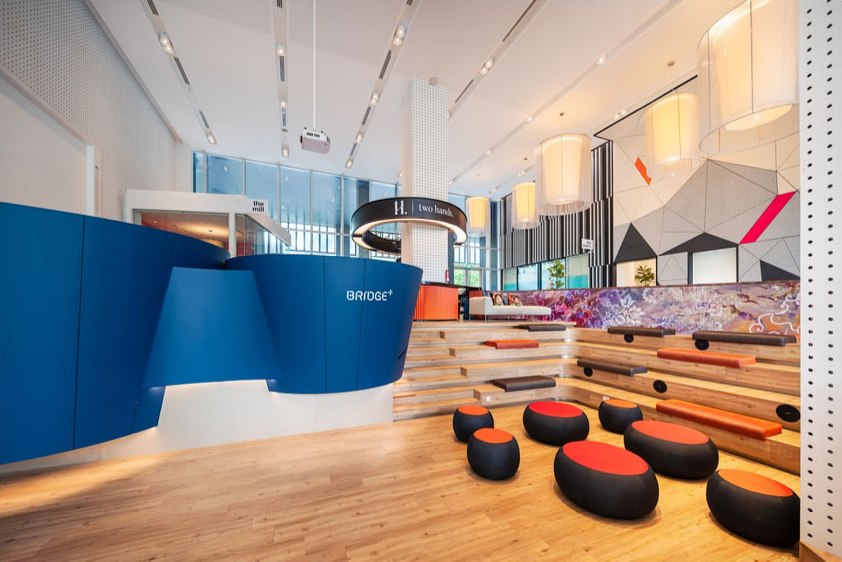
Working alongside competitors: a benefit or a challenge?
Some enterprises worry about working right next door to their competitor in a coworking space. But this can also be an opportunity for partnerships and learning. For example, at Bridge+, community managers organise events that provide opportunities to meet other people and spark conversations naturally. This allows members to meet professionals from within their industry, as well as from other fields.
Community managers have observed that after talking with other industry players in these events, people often gain useful insights that can help them improve their own processes.
And as long as the coworking space meets stringent security (cyber and physical) and data privacy standards, working in the same space as other companies in your industry should not be a cause for worry. In fact, many companies like to work in “hubs”—for example, a fintech hub within the financial district—as doing so helps facilitate learning, networking, collaboration, and innovation.
Tips for enterprises in transitioning to a flexible workspace
Making the move to a coworking space requires careful planning and vetting of workspace operators. As an enterprise, you’ll want a coworking space operator with credibility, experience, and the ability to meet your requirements and security standards.
Conduct a cybersecurity assessment
Assess the level of network security within the coworking space. Find out what controls they have in place to protect against cyberattacks, and how frequently they conduct security audits. They must also have user access controls for their network and workplace management system.
Your security assessment must also consider the workspace’s compliance with Singapore’s Personal Data Protection Act. At the same time, you must ensure that you can comply with data privacy regulations relevant to your industry even when you’re in a shared workspace.
A flexible workspace for enterprises must also be capable of providing you with your own private network if you need one.
Ensure you can secure your suite sufficiently
Security—both virtual and physical—is one of the top concerns that enterprises have when transitioning to a coworking space.
For example, Bridge+ provides digital locks for every suite within its coworking spaces. These help you manage and track access to your suite.
The good thing about digital locks is that they provide you with data about employee usage of your flexible workspace. This not only helps you trace entries and exits if you need to investigate a security incident, but it also gives you an idea of just how much the space is used.
For example, an enterprise might initially rent a suite with 40 seats. On reviewing employee usage data obtained through digital locks, the company might decide to lease more or fewer seats.
Determine the potential cost savings
How much will you save as a result of using a coworking space? Calculate how much you will save in terms of:
-
Rent — Instead of paying for underutilised space in your office or building, you could lease premises within a coworking space instead, complete with facilities like pantries, meeting rooms, and cafes. Coworking spaces also have less prohibitive upfront costs compared to commercial leases.
-
Furniture and interior design — The coworking space will fit out your suite before you move in. Most coworking spaces are also designed to provide an inspiring environment to members. They have a variety of spaces that allow for concentration, collaboration, privacy, formal events, casual chats, and relaxation.
-
Equipment — Coworking spaces provide the equipment you need to host meetings, events, and conferences. These include monitors, projectors and screens, speaker systems, microphones, catering capability, and tables and chairs that can be configured to suit different types of events.
-
Physical security — a coworking space provides security systems, such as digital locks for suites. Spaces that allow 24/7 access also have staff present round-the-clock, so you don’t have to worry about manning your space at all times.
-
Employee perks — Even though coworking spaces help you save money, they also help you deliver a better experience to your team members. A large, established coworking space typically provides benefits for its members. For example, Bridge+ at 79 Robinson Road offers a roof garden and sky terrace.
-
Employee engagement and networking — Coworking spaces often have a calendar of programmes, ranging from industry-related events to more leisurely activities. At Bridge+, members can also initiate activities, while community managers organise casual lunches to create opportunities for people to make new acquaintances.
Consider the available types of rooms, spaces, and facilities
The ideal flexible workspace solution for an enterprise is adaptable to suit the team size and office configuration you want.
At a time like this when we're dealing with a pandemic, some enterprises opt for large suites that allow social distancing. Others prefer several smaller suites for teams to avoid having large groups of people in close contact. An enterprise team can also spread out in different zones within a workspace and use phone booths and meeting spaces.
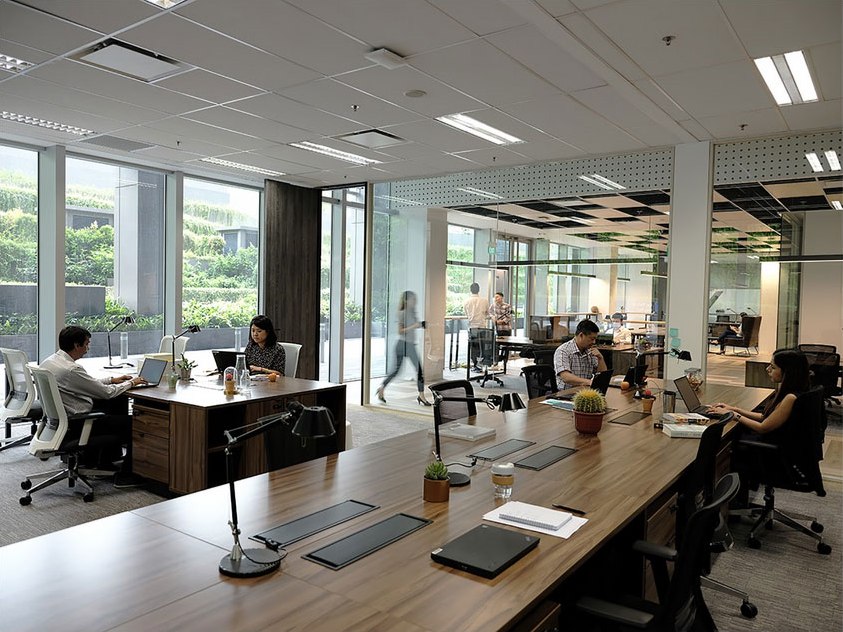
It helps to think in terms of team dynamics—which teams work together more often? What kind of equipment do they need to bring? Does one team often write on whiteboards or even walls? Does another need space for multiple monitor screens per person, or lots of room for filing cabinets?
Consider the facilities, too. Do you need both big and small event spaces, as well as meeting and conference rooms and phone booths? Do you need private spaces where you can meet with clients? Are the event spaces equipped to host virtual conferences?
Talk with the community manager of the coworking space to see if they can accommodate your needs. For a hassle-free transition, it’s best to opt for a space that provides services, such as fitting out the space and moving office equipment.
Think about how the space will affect your company culture
Consider how well the coworking space’s aesthetics and layout reflect your corporate brand and culture. Is it important for you to have a specific interior style, such as an ultra-modern look? Do you prioritise greenery and open spaces?
Beyond aesthetics, think about how the new space will affect team members’ lifestyles. Let’s say your company prides itself on its support of lifelong learning. You’ll probably want a coworking community that organises educational and professional events. You may even want the chance to co-organise an event at the space.
Or maybe you encourage employees to live healthier lifestyles. You may want to join a coworking space that has a gym or gives members a discounted rate to use the gym within the same building.
You’ll also need to be intentional about maintaining norms and practices that uphold your company culture. Let’s say that pre-Covid, the top executives in your enterprises were accessible to many teams because you were all in the same office. But now, your team is distributed across various coworking locations. To maintain this culture of openness and accessibility, you could start a monthly virtual “lunch with the CEO” or a quarterly “ask me anything” session for executives.
What impression will the space make on clients?
If you like inviting clients to your office, consider what impression the location, building, and facilities will make on them.
Do you want an impressive entryway or a more down-to-earth vibe? Would clients be okay with meeting at a cafe, or do they expect a quiet, private space when they meet up with you?
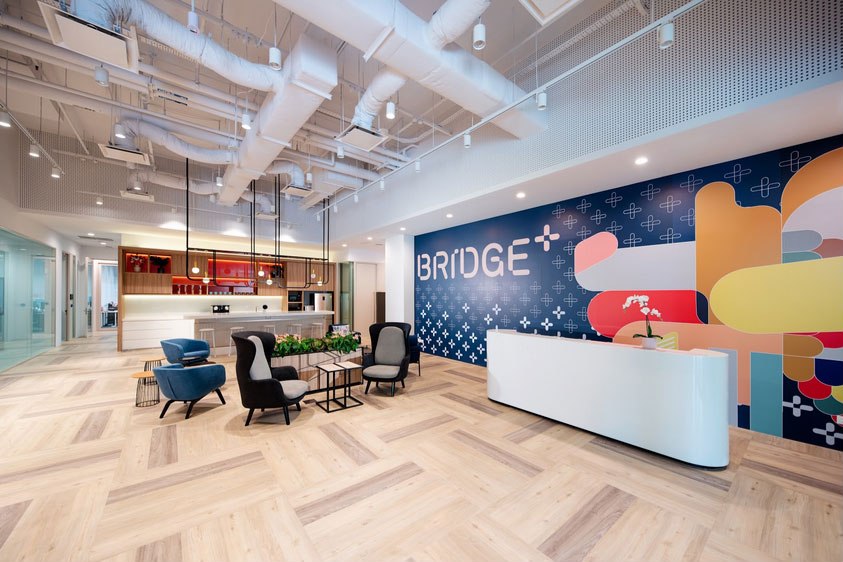
Discover what the community is like
A good fit is crucial to enjoying the benefits of a coworking community.
Some enterprises might prefer a huge diversity of coworking neighbors in terms of their industry and company size. Others might prefer to zoom in on a specific sector—a fintech hub, for example. So before committing to a coworking space, find out who the existing tenants are, and determine whether there are potential partners and collaborators among them.
But that’s just part of the puzzle. The other crucial piece is the level of engagement among coworking space members and having a culture of openness to meeting new people.
That’s where community managers come in. It’s difficult to underestimate their role in helping tenants build relationships. After all, it can be awkward for new community members to just join in a conversation in the pantry or chat up a stranger at an event. Not everyone is a natural conversationalist.
For instance, community managers at Bridge+ help to “matchmake” tenants. For example, one startup looking to raise a funding round might ask if there’s any investment firm renting the space.
At other times, it’s simply a matter of helping people get to know one another. “We organise community lunches where we give new members time to speak and share about their company. It’s a very casual, social, fun lunch. So next time you bump into this person, it won't be so awkward to ask, ‘How’s everything going?’” shares Yugine.
Learn and negotiate the terms of the rental agreement
Find out how adaptable the coworking space is to your needs. Coworking spaces that have experience in hosting bigger companies tend to be better able to understand and accommodate enterprises’ requests.
For example, you might need a “swing space” to call home for a few months while you renovate your office or house additional staff during peak business seasons. The rental agreement should ideally allow you to take a short-term lease for a certain number of months, with the option to extend if needed.
Contract flexibility also applies to the amount of space you rent. You could rent a specific area with the option to increase or decrease the number of seats once you’ve assessed the staff’s usage of the space.
It’s also important to know whether or not the coworking space will source and manage vendors for things like suite design, fit-out, private network setup, and more.
Remember to involve your company’s purchaser, office manager, and lawyer in these discussions!
Making the most out of the space
It’s normal to undergo a transition and troubleshooting period when transitioning to a new workspace. In these unprecedented times, the best we can do is to observe what works and learn from our mistakes, as well as follow the best practices of companies that have succeeded in making the most out of a flexible workspace solution.
Making the most out of a coworking space doesn’t just mean getting more bang for your buck. It means finding opportunities to improve the employee experience, develop new ideas, and grow your business through the community and flexibility offered by the space.
Still uncertain about how your enterprise can use a coworking space? Worry not—we’ve prepared a visual guide for you. Download this infographic to guide you through one of our flexible workspaces and visualise the possibilities that await.



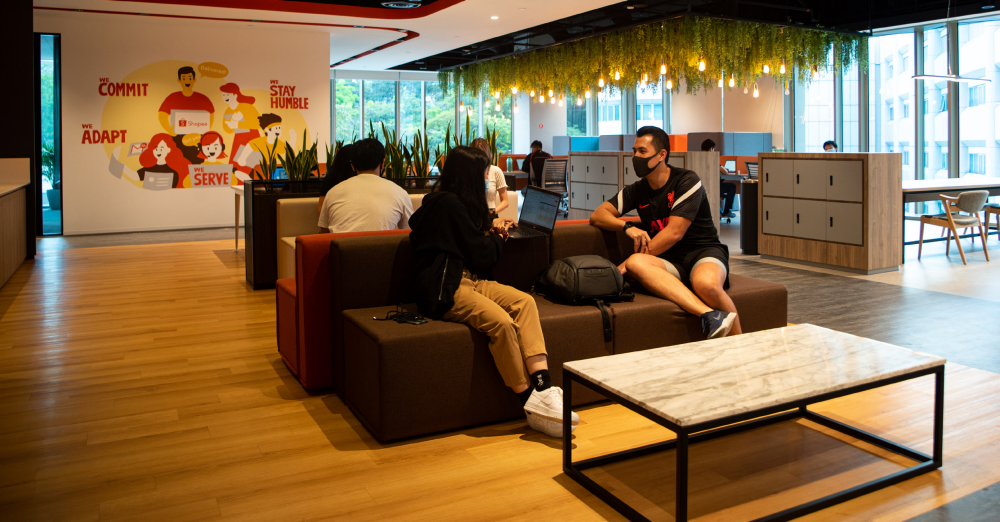


-1.jpg)








